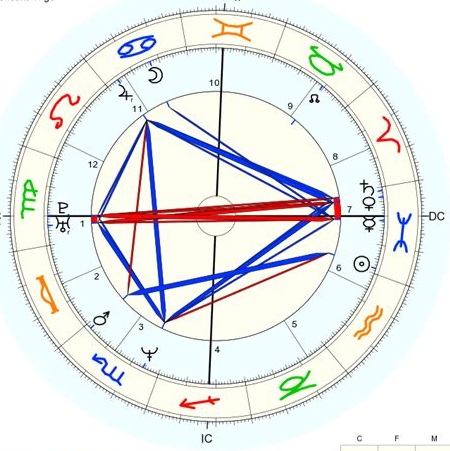Kite Configuration

In astrology, a kite configuration is a unique planetary pattern that looks—yes—like a kite in the chart.
Right now, the sky has a kite configuration that’s both exciting and a bit intense. This will last till mid week. The full moon this weekend is lighting up this configuration, amplifying its intensity.
We have a Grand Trine in air signs — Mars in Libra, Pluto in Aquarius, and Uranus in Gemini — bringing a natural flow of ideas, communication, and innovation.
But there’s also Saturn and Neptune together in Aries, directly opposite Mars. That’s the “tail” of the kite — the part that adds tension, focus, and direction. These two also form sextiles to Pluto and Uranus, tying the whole pattern together.
The Grand Trine gives you lift — like catching a steady breeze of insight, creativity, and motivation. Mars is the “nose” of the kite — the part that wants to take off fast. Saturn and Neptune are the anchor — acting as both a stabilizer and a drag. Saturn demands discipline, while Neptune seeks dreams; together they can feel foggy but purposeful.
With all this happening around the August 9 Full Moon in Aquarius, there’s an extra dose of emotional clarity and “aha!” moments about what (or who) belongs in your orbit — and what needs to go.
Bottom line: This is a “go for it” sky, but with a caveat — you’ll fly higher if you balance action (Mars) with vision (Neptune) and structure (Saturn). Push too fast without a plan, and you’ll just spin in circles.
One challenge of a kite configuration is that the opposition can either be ignored—letting problems fester—or get drowned out in “too much of a good time,” neglecting necessary work. The current Mars opposite Saturn/Neptune aspect demands effort. It’s a test of disciplined will. Saturn is about duty, responsibility, obligation, and getting real.
For example, musician, Kurt Cobain had a kite in his birth chart, but the opposition points were steeped in obsession, escape, nervous tension, and the challenge of balancing idealism with reality. In his case, Uranus and Pluto opposed Saturn and Venus, forming what you could call a “quadruple kite,” as each planetary pair carried its own themes:
Pluto (Virgo) Opposite Saturn (Pisces) – Control and compulsion (Pluto–Virgo) versus surrender, faith, and porous boundaries (Saturn–Pisces). Structures dissolved just as he tried to build them, creating guilt, pressure, and a chronic sense that “nothing is solid.”
Pluto (Virgo) Opposite Venus (Pisces) – Obsessive love, power dynamics, and creative intensity. The beauty/idealism of Venus–Pisces collided with Pluto’s shadow work in Virgo, resulting in all-or-nothing bonds, fear of loss, and artistic extremity.
Uranus (Virgo) Opposite Saturn (Pisces) – Freedom versus responsibility at full force. Uranus’s disruptions rattled the already-thin boundaries of Saturn–Pisces, producing erratic discipline, sudden changes, and inner whiplash.
Uranus (Virgo) Opposite Venus (Pisces) – Electrified romance and artistry — thrilling but unstable. This brought sudden breaks and reunions, attraction to the unconventional, and flashes of inspiration that vanished as quickly as they appeared.
Both Uranus and Pluto hammered Saturn and Venus, so instability and compulsion struck his security (Saturn) and his love/values/creative style (Venus) at once. His Grand Water Trine (Moon in Cancer, Venus/Saturn in Pisces, Neptune in Scorpio) gave him endless emotional flow and creative sensitivity, but the oppositions supercharged it — sometimes into genius, sometimes into overwhelm.
What might have helped him? Surrendering more to support, accepting help, and cultivating solid, dependable systems around him.
For the next four days, this same lesson applies: find the balance between duty and desire. A kite can create miracles — but only if you put in the effort.



